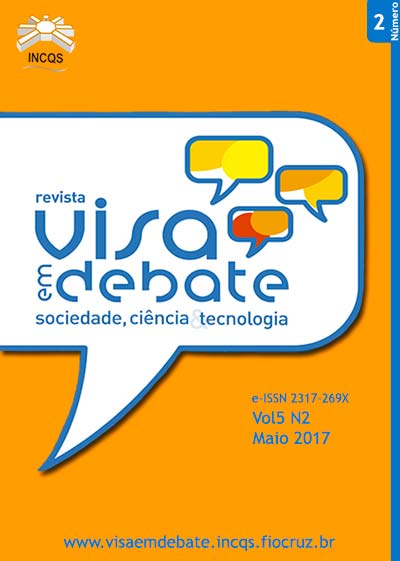Assessment of penalties in pharmacies of the city of Goiânia-GO
DOI:
https://doi.org/10.22239/2317-269X.00936Keywords:
Health Surveillance, Pharmacy, PenaltyAbstract
Health surveillance has the objective of preventing and reducing risks to individual and collective health. Due to the health hazard inherent to the manipulation activity, the manipulation pharmacies are subject to health surveillance.This study purpose was to characterize the number of sanitary penalties applied to manipulation pharmacies in Goiânia-GO from 2010 to 2015. The number of penalties issued by the Municipal Health Surveillance of Goiânia-GO, as well as the existence of interrelationship between the characterized aspects, were analyzed using a quantitative, retrospective and analytical perspective. Through the collected data independent (number of pharmacists, number of annual self-inspections, class membership, property) and dependents variables (fines, seizures, prohibitions and warnings) were defined. The results indicated that pharmacies: which had a large number of pharmacists suffered fewer penalties; that carried out self-inspection suffered fewer fines; and that are affiliated to class institutions suffered a minor number of interdictions. It was also noted thatthe fact that the owner was a pharmacist raised the technical quality of the establishment. The study pointed out that the smaller the number of assessments, seizures and interdictions separately, the lower the total number of penalties.Downloads
Downloads
Published
Issue
Section
License
Copyright (c) 2017 Health Surveillance under Debate: Society, Science & Technology (Vigilância Sanitária em Debate: Sociedade, Ciência & Tecnología) – “Visa em Debate”

This work is licensed under a Creative Commons Attribution-NonCommercial-NoDerivatives 4.0 International License.
COPYRIGHT ALLOWANCE The author (s) hereinafter designated as the ASSIGNOR hereby assign and transfer, free of charge, the ownership of the copyrights related to this ARTICLE to the Vigilância Sanitária em Debate: Sociedade, Ciência & Tecnologia (Health Surveillance under Debate: Society, Science & Technology) – Visa em Debate, represented by FUNDAÇÃO OSWALDO CRUZ, established at Av. Brasil, nº 4365, Manguinhos, Rio de Janeiro, RJ, Brazil, CEP 21045-900, under the conditions set out below: (a) The terms and conditions set forth in this Agreement shall apply to the following: 1. The ASSIGNOR declares that they s(he) is (are) the author (s) and owner (s) of the copyrighted property of the ARTICLE submitted. 2. The ASSIGNOR declares that the ARTICLE does not infringe the copyrights and / or other property rights of third parties, that the disclosure of images (if any) has been authorized and that they s(he) assume(s) full moral and / or property liability for its content, before third parties. 3. THE ASSIGNOR assigns and transfers all copyrights relating to the ARTICLE to the ASSIGNEE, especially the rights of editing, publication, translation into another language and reproduction by any process or technique. The ASSIGNEE becomes the exclusive owner of the rights related to the ARTICLE, and any reproduction, totally or partially, is prohibited in any other means of publicity, printed or electronic, without prior written authorization from the ASSIGNEE. 4. The assignment is free and, therefore, there will be no remuneration for the use of the ARTICLE by the ASSIGNEE.







